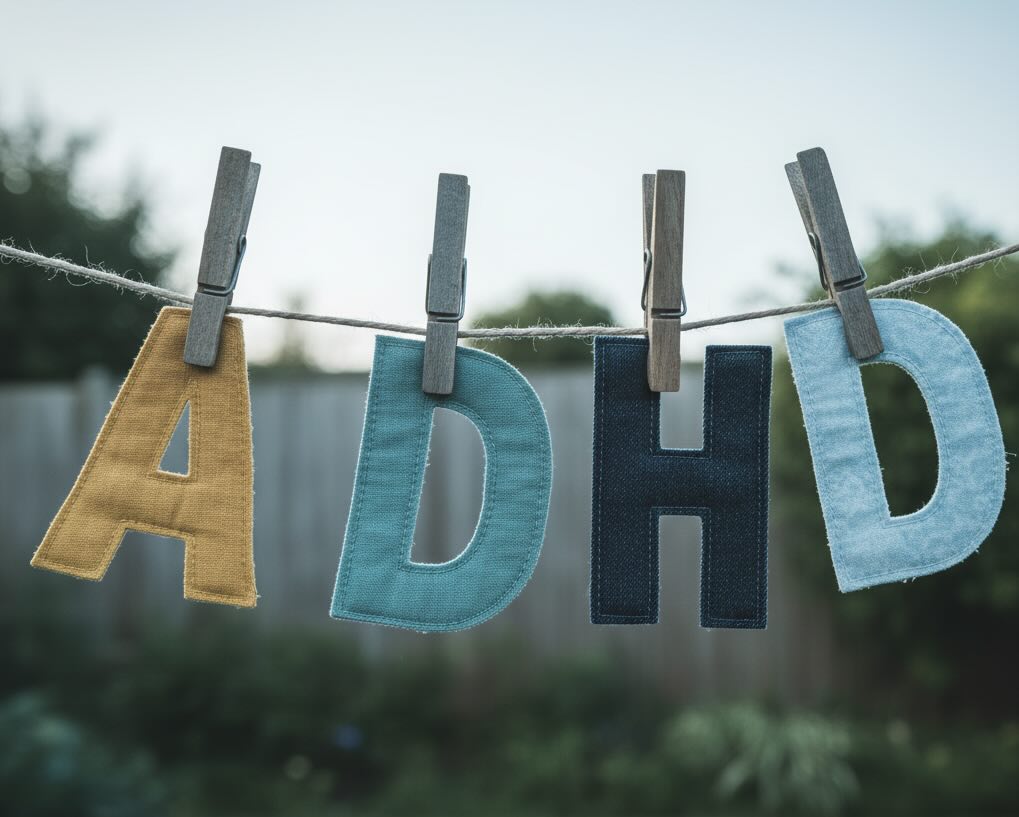What is Compulsive Sexual Behaviour?
Compulsive sexual behaviour is when sexual thoughts, urges, or activities feel out of control and keep happening even when someone is trying to stop. These activities might include:
- Compulsive masturbation and/or excessive pornography use
- Multiple casual partners or anonymous encounters, including risky sex (e.g., not using protection, unsafe meeting situations)
- Cybersex, paid sexual services, or sexting that feels out of control
- Sexual activities that overlap with other issues such as substance use, gambling, or online gaming.
Some people mainly struggle with online behaviour; others with in-person sex; many experience a mix. Compulsive sexual behaviour is not about having a high sex drive. It’s about loss of control and the impact on your life, relationships, health, and wellbeing.
It is a newer formal diagnosis called Compulsive sexual behaviour disorder (CSBD) in the World Health Organisation's ICD-11 and was implemented by WHO in 2022, and sits with impulse-control disorders rather than addictions. The DSM-5-TR (Diagnostic and Statistical Manual of Mental Disorders, Fifth Edition, Text Revision), published by the American Psychiatric Association (APA), does not currently list CSBD or “sex addiction” as a standalone diagnosis. Specialists who follow the DSM-5-TR may instead use other categories (e.g. “other specified sexual dysfunction”, impulse-control disorders, or diagnoses for co-occurring conditions), while still drawing on ICD-11 and CSBD research to guide formulation and treatment.
How compulsive sexual behaviour relates to other conditions
Compulsive sexual behaviour commonly overlaps with, or is influenced by:
- Depression and anxiety: sexual behaviour may be used to cope with low mood, loneliness, stress or trauma, while guilt and secrecy can worsen mood and anxiety.
- Substance use: alcohol and drugs (including “chemsex”) can lower inhibitions and increase risk-taking; in some people, CSBD and substance use disorders reinforce each other.
- Other behavioural addictions such as problematic gambling, gaming or internet use. CSBD shares some brain and personality features with these conditions.
- ADHD, bipolar disorder and personality vulnerabilities: difficulties with impulse control, emotional regulation or sensation-seeking can all contribute.
- Past trauma: including childhood emotional, physical or sexual trauma, which may shape how people use sex to regulate emotions or feel valued.
Because of this, Loffty’s multi-condition assessment looks not only at sexual behaviour but also mood, anxiety, substance use, trauma history and other factors that may be driving or maintaining the cycle.
Compulsive sexual behaviour at work
Compulsive sexual behaviour can have significant impacts in the workplace, for example:
- Reduced concentration and productivity: preoccupation with sexual thoughts or urges can make it hard to focus or complete tasks on time.
- Using work time or devices: for sexual content or contacts, which may breach workplace policies and create IT, legal or reputational risk.
- Risky interactions with colleagues or clients: boundary issues, inappropriate messaging or flirting, or difficulty respecting workplace norms.
- Absenteeism and burnout: time spent recovering from sleepless nights, intense emotional ups and downs, or consequences of risky encounters.
Supporting staff with CSBD involves non-shaming, confidential pathways to care, as well as clear workplace policies on boundaries and technology use.
Compulsive Sexual Behaviour Symptoms
Core patterns
People experiencing compulsive sexual behaviour often report some of the following:
- A persistent pattern (typically 6 months or more) of failure to control intense, repetitive sexual impulses or urges.
- Spending large amounts of time on sexual activities (online or offline), which becomes a central focus of life at the expense of sleep, hobbies, family or work.
- Feeling out of control: “I keep promising myself I’ll stop, and then I don’t.”
- Using sex or sexual fantasy to cope with stress, boredom, loneliness, anxiety or low mood.
- Taking risks: e.g. unprotected sex, multiple partners, meeting strangers, or situations that could cause relational, financial or legal harm.
- Continuing the behaviour even after serious negative consequences (relationship problems, financial or legal issues, health risks like STIs, impact on work or study), or when it no longer feels particularly pleasurable.
- Repeated unsuccessful efforts to cut down or stop.
- Feeling shame, guilt, secrecy or double-life feelings, and strong fear of being “found out”.
Importantly:
- Distress that is only due to moral, cultural or religious disapproval of sexual thoughts or behaviour is not enough for a CSBD diagnosis.
- Diverse consensual sexual interests, orientations or lifestyles are not automatically disordered. The focus is on loss of control and harm, not on specific sexual preferences.
How it may feel day to day
- You might wake up planning not to look at pornography or not to contact someone, but find yourself doing so later, almost on “autopilot”.
- checking phones, dating apps or porn sites for long periods, often late at night.
- Feeling "numb" or disconnected and needing more intense or frequent sexual material to feel any effect.
- You may feel trapped in a cycle of urge → acting out → temporary relief → shame → resolve to stop → urge again.
- Relationships can feel unstable: intense closeness followed by withdrawal, secrets or betrayal, or difficulty with emotional intimacy that isn’t sexual.
- You may question your values or identity: “Is this who I really am?”
When to seek urgent help
Consider reaching out for professional support if:
- Sexual behaviour is causing serious distress, shame, or hopelessness
- You keep breaking your own limits or promises about “never again”
- Relationships, work, study, finances, or health are being harmed
- You feel unable to stop even when you want to
- You notice escalating risk(e.g., unsafe sex, crossing personal or legal boundaries).
Seek immediate help (emergency services or local crisis team) if you:
- Have strong thoughts of suicide or harming yourself or others.
- Are at immediate risk because of violence, coercion, or unsafe sexual situations.
How do you Assess Compulsive Sexual Behaviour
Compulsive sexual behaviour often occurs alongside other mental health conditions such as depression, anxiety, PTSD, bipolar disorder, ADHD, substance use disorders, and paraphilic disorders, which may need parallel treatment. Because of this, using single disorder assessment tools like ICD-11–aligned single disorder assessments such as the CSBD-19 or CSBD-7, or the Hypersexual Behavior Inventory (HBI), or the Sexual Addiction Screening Test (SAST), risks assessing someone with compulsive sexual behaviour but missing out on a co-occurring condition. It is therefore important to assess compulsive sexual behaviour in the broader context of your mental health, not as an isolated problem. Therefore, a formal diagnosis should involve a few steps:
- Start with a broad multi-disorder mental health screen: A multi-disorder tool like Loffty will flag important co-occurring issues and suggest you may benefit from a more detailed, in-person evaluation.
- Clinical interview: Depending on your country, a sex therapist/sexologist, clinical psychologist, or psychiatrist can formally diagnose CSBD. They will explore patterns of behaviour, triggers, consequences, values and goals, alongside general mental health and relationship history. Formal diagnosis also aims to rule out co-occuring or differential diagnoses or factors such as:
- Simply having a high sex drive
- Short-term spikes in sexual interest (e.g., new relationship, travel)
- Sexual behaviour driven mainly by substance use: risky sex mainly when intoxicated
- Sexual behaviour driven mainly by bipolar disorder: sexual impulsivity only during manic/hypomanic episodes
- Personality disorders: sexual acting out primarily as a form of emotion regulation or self-harm
- Paraphilic disorders: focus on atypical arousal patterns or non-consenting/underage individuals, which may or may not co-occur with CSBD
- Neurocognitive disorders/neurological conditions: disinhibited behaviour due to brain disease e.g. dementia or injury.
- Clarifying boundaries with normal sexuality: making sure that consensual, diverse sexual expression or distress solely due to moral, cultural or religious guilt is not mis-labelled as pathology.
Treating Compulsive Sexual Behaviour
Treatment is highly individual. Most guidelines recommend psychological therapies as first-line treatment, often combined with lifestyle changes and structured support for any co-occurring conditions. The aim is not to remove sexuality but to regain control, safety, and alignment with your values.
Psychoeducation and lifestyle supports
- Understanding how urges, emotions and habits interact: learning about triggers (stress, isolation, boredom, certain online environments, substances).
- Practical safety steps: for example, adjusting device settings, limiting access to certain apps or sites, or changing routines that reliably lead to acting out.
- Physical activity: movement helps regulate stress, mood and urges
- Sleep and daily routine: regular sleep and structured days reduce late-night “scrolling” or binge behaviour
- Reduce or eliminate substance use: alcohol and stimulants can lower inhibitions and trigger acting out
- Social connection: building non-sexual friendships and hobbies to reduce loneliness and boredom
- Values-based planning: deliberately planning time around what matters most (family, health, creativity, spirituality) with structured routines can reduce vulnerability to compulsive patterns.
Psychological therapies
Evidence (though still limited) supports several approaches:
- Cognitive Behavioural Therapy (CBT)
- Helps identify and change unhelpful thoughts (“I’m worthless unless someone wants me”, “This is the only way I can cope”) and behaviours that maintain the cycle.
- Often includes relapse-prevention planning, urge-surfing and skills for managing emotions without sexual behaviour.
- Acceptance-based and mindfulness approaches
- Aim to reduce shame, increase awareness of urges without acting on them, and reconnect with personal values (e.g. intimacy, authenticity, safety).
- Trauma-focused therapies (where relevant)
- Address underlying trauma, attachment wounds or beliefs about self-worth that may be driving compulsive sexual behaviour.
- Address underlying trauma, attachment wounds or beliefs about self-worth that may be driving compulsive sexual behaviour.
- Schema/pyschodynamic therapy: looks at deeper patterns (shame, attachment, identity that drive behaviours
- Couples and relationship-focused therapy
- Supports rebuilding trust, communication and sexual intimacy, where a partner is involved and it’s safe to work together.
The format for these approaches can be individual, group, or a mix. Many people attend weekly sessions for several months, with follow-up or booster sessions as needed. Because shame is such a strong driver in CSBD, a non-judgemental, sex-positive therapist who understands both sexual health and addiction/compulsivity is crucial. Avoid therapeutic approaches that shame or punish sexuality in general or "conversion" or "reparative" therapies targeting sexual orientation or consensual sexual interests - these are unethical and harmful.
Medications
There is currently no medication specifically approved for CSBD. However, small studies and case reports suggest that:
- SSRIs (antidepressants) may help some people by reducing obsessive thoughts, urges and underlying depression or anxiety.
- Opioid antagonists (e.g. naltrexone) may reduce cravings and reward, especially where there is overlap with other addictive patterns.
- Medications for co-existing conditions (e.g. depression, bipolar disorder, ADHD) can also indirectly reduce compulsive sexual behaviour.
All medication decisions should be made with a qualified prescriber who understands your full history. Off-label use should be discussed carefully, with attention to benefits, side effects and alternatives.
Support groups and peer support
Many people find it powerful to talk with others who “get it”. Options include 12-step-style and other peer groups such as:
- Sex Addicts Anonymous (SAA)
- Sex and Love Addicts Anonymous (SLAA)
- Sexaholics Anonymous (SA) and related “S-groups”.
These groups use different definitions of recovery and sobriety. Some people find them life-changing, others prefer approaches rooted more explicitly in the ICD-11 CSBD framework or in sex-positive therapy. The “right” fit is the one that supports safety, consent, diversity and your values.
What to bring to an appointment
- A brief written summary of your concerns: when it started, how it has changed
- Examples of situations where you felt “out of control”
- Any previous mental health diagnoses or medications
- Substance use history (alcohol, drugs, prescribed meds like dopamine agonists)
- Notes about mood, anxiety, trauma, or other mental health symptoms
- Questions you want to ask about treatment, privacy, and goals.
What the Research says
Research into CSBD has accelerated since its inclusion in ICD-11, but it is still developing. Recent work highlights that:
- CSBD is now formally recognised as an impulse-control disorder in ICD-11, though there is ongoing debate about whether it functions more like a behavioural addiction.
- Large international studies (e.g. the International Sex Survey (2023) with over 80,000 participants in 42 countries) find ~5% at high risk of CSBD, with big variations by country and gender, and very low treatment-seeking ~14% partly because of stigma, shame and confusion about what's "normal".
- CSBD often overlaps with problematic pornography use, trauma, mood and anxiety disorders, and substance use, and may share mechanisms with other addictions (e.g. reward processing, impulse control).
- Researchers stress the importance of not pathologising non-harmful, consensual sexual diversity, or distress driven purely by moral or religious conflict.
- Recent reviews call for better-quality treatment trials (especially for CBT, mindfulness and digital interventions), more inclusive samples (including women and gender-diverse people), and clearer clinical guidelines.
Research suggests that out-of-control sexual behaviour is not rare, and many people are struggling silently.
Current research areas point toward biopsychosocial models:
- Biological: possible roles of reward circuits, impulsivity, and compulsivity traits; links with ADHD and OCD-spectrum features are under study.(Frontiers)
- Psychological: emotion dysregulation, shame, perfectionism, trauma histories, attachment patterns, and difficulty tolerating distress
- Social and cultural: availability of on-demand sexual content, anonymity of the Internet, peer norms, gender expectations, stigma around sexuality
High rates of childhood adversity, including sexual abuse, are often reported among people in treatment for CSBD, especially women, though not everyone has this history.
Comorbidity patterns
Studies consistently find:
- Elevated rates of mood and anxiety disorders
- Substance and behavioural addictions (e.g., gambling)
- Personality disorder traits (particularly borderline and narcissistic features)
- Sexual health risks, including higher STI and HIV risk in some groups
This makes thorough assessment and integrated care crucial.
Methodology caveats
- Many studies rely on self-labelled“sex addicts” responding to online adverts, not on representative samples.
- Screening tools often blur the line between high sexual interest and impairment, and may reflect moral or cultural norms more than genuine loss of control.
- Women, LGBTQ+ people, and non-Western populations have historically been under-studied, though this is starting to change (e.g., recent Japanese survey data).
Books and resources
- Compulsive Sexual Behavior Disorder: Understanding, Assessment, and Treatment – Richard Balon & Peer Briken (APA Publishing, 2021). Comprehensive overview of ICD-11 CSBD, assessment, pharmacotherapy and psychotherapy, with chapters on women, internet-related CSBD and forensic issues.
- Compulsive Sexual Behaviours: A Psycho-Sexual Treatment Guide for Clinicians – Silva Neves (Routledge, 2021). Integrates sex-positive, trauma-informed and pluralistic psychotherapy approaches, and challenges simplistic “sex addiction” models.
- CBT for Compulsive Sexual Behaviour: A Guide for Professionals – Thaddeus Birchard. Practical CBT/relapse-prevention model with group and individual treatment structures.
- “Assessment and treatment of compulsive sexual behavior disorder: a sexual medicine perspective” (Briken et al., 2024).
- “Evaluation and treatment of compulsive sexual behavior: current perspectives” (Frontiers in Psychiatry, 2025).
These books use the older “sex addiction” language but are widely used by people seeking recovery and by therapists. They may be helpful if read alongside up-to-date, sex-positive information about CSBD:
- Out of the Shadows: Understanding Sexual Addiction – Patrick Carnes.
- Facing the Shadow: Starting Sexual and Relationship Recovery – Patrick Carnes (workbook).
Choose resources that align with your values, culture and beliefs about sexuality and relationships.




